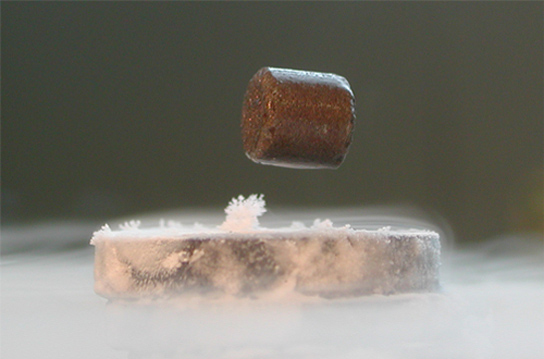
Superconductivity, a phenomenon that works only at temperatures close to absolute zero, has been proven to work at higher temperatures, as much as 70 kelvin (-203 Celsius or -334 Fahrenheit). Physicists have been struggling to find out the exact reason why some superconductors can work at warmer temperatures.
Superconductivity allows the conduction of electricity without resistance. A new iron-based crystal regains its superconductive traits at higher temperatures, when it’s placed under pressure. This has broken the record for which superconductivity can exist for these types of crystals of iron selenide.

Liling Sun, a condensed-matter physicist at the Institute of Physics, Chinese Academy of Sciences, in Beijing, and her colleagues have been investigating how iron selenide behaves when it’s placed under pressure. Pressure can tune basic electronic and lattice structures by shortening atomic distances, and this is one of the reasons why iron selenide can superconduct at much higher temperatures than expected.
Under normal pressure, iron selenide remains superconductive until 30 K (-243 C or -406 F). Once they placed the crystals under a pressure of 11.5 gigapascals, they found that the crystals regained their superconductivity. Pressure-induced re-emergence of superconductivity has not been found in any of the high-temperature superconductors. At 12.5 GPa, samples could superconduct at temperatures up to 48 K (-225 C or -373 F), which sets a new record for iron selenides.

It’s hoped that they can find a way for iron selenide to remain superconductive at temperatures higher than 77 K (-196 C or -321 F), the temperature at which liquid nitrogen boils.
Subir Sachdev, a condensed-matter physicist at Harvard University in Cambridge, Massachusetts, says that this bizarre re-emergence of superconductivity might be related to the fact that there are vacancies in the sites the crystals don’t have any ions in, which are shuffled around when pressure is applied.
Sun and her colleagues will carry out neutron-scattering experiments to see how the structure of a sample will change under pressure. This could help determine whether the ordering of vacancies, changes in magnetism, or another effect is behind the change in behavior of iron selenide.
Although the first phase of superconductivity in iron selenide seen in low pressures is related to the transition seen in other high-temperature superconductors, the re-emergence of superconductivity at higher pressure is probably a new type of phase transition that follows a different mechanism altogether.